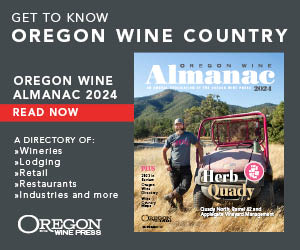Going for oak
Foresters observing certain stands of Douglas firs in Northwest Oregon note small, underdeveloped oaks struggling to stay alive beneath the canopy created by their coniferous cousins.
They serve as mute testimony to what the area looked like 150 years ago, when the oaks that preceded this current growth didn’t have to compete with their needled neighbors.
A few stately survivors that managed to make their way to the sunlight despite the conifers tell the story of a once serene savanna dotted with oaks, their wide-spreading crowns dominating the scene.
In that earlier time, lush grasses surrounded the base of their trunks and blanketed the gently undulating hillsides. The grassy ground cover created a sense of flowing continuity across the landscape.
When Our Lady of Guadalupe Cistercian Trappists purchased a 1,347-acre haven a few miles north of Lafayette in 1948, it included 50 hillside acres of former oak savanna, lost to invading Douglas fir.
Living simply and self-sufficiently over the past six decades, the brothers at the Abbey have pursued a life of monastic spirituality, while also connecting closely with nature. That prompted them to become active stewards of the land.
In 2010, they established a conservation easement, which protects the property from development in perpetuity. That led them to begin recreating the original oak savanna on the heavily wooded hillside adjacent to the monastery campus.
Since 1997, the Abbey had been contracting with Trout Mountain Forestry to help them manage their forested acreage. So it was logical for the monastery to also turn to the company for help with the savanna project.
Brother Chris, who holds a degree in forestry from Humboldt State College, in California redwood country, has been designated point man for the Trappists. He is working with Trout Mountain’s Scott Ferguson, one of the firm’s six foresters, whom Brother Chris terms “the mastermind.”
Their first task was to clear dense underbrush and log hundreds of trees, mostly fir. They used a single-grip harvester for the tree-cutting.
“It’s amazing to see it in action,” Brother Chris said. “The machine saws them off near the ground and lifts them away for stacking, almost in one motion.”
Some logs were hauled off to mills. The rest were stacked 20 feet high next to the savanna boundary.
They are destined to supply the monastery with firewood. But it will take a lot of cutting and splitting to make that possible.
Next up is grinding the stumps down to ground level.
“They don’t have to be removed,” Ferguson said. “But grinding them down is quite a job. Then we can begin smoothing the ground in preparation for seeding.”
Native grasses will be reintroduced and propagated once the stumps have been eliminated. The tricky part is eradicating all invasive and foreign species, then being vigilant in blocking their return.
“We are recreating what it looked like two centuries ago,” Ferguson said. “It will take another three years or so to get the savanna the way we want it. You won’t believe how beautiful it will be.”
Historically, he said, Oregon white oak thrived in the microclimate of the Willamette Valley. But he noted only about 7 percent of it remains.
Ferguson said the abbey’s oak savanna will provide habitat for several rare and endangered animal species, including the acorn woodpecker and the white-breasted nuthatch. “We expect a lot of common gray squirrels, too,” Brother Chris added.
Chris Seal, a U.S. Fish and Wildlife Service agent based at the Baskett Slough National Wildlife Refuge, has been assisting with the habitat improvement work.
“Fish and Wildlife has been great,” Brother Chris said. He said Seal had “spent a lot of time helping us and giving us encouragement.”
He also singled out the Oregon Watershed Conservation Board, Yamhill County Soil and Water Conservation District, Greater Yamhill River Watershed Council and the USDA’s Natural Resources and Conservation Service, saying their assistance and cooperation had proven invaluable.
The USDA is lending the services of Kim Hudnall of the McMinnville office, who said, “It’s such a pleasure when we can work with owners who are so eager to restore lost habitat. This is going to be a terrific resource.
“I can hardly wait to come back in a couple of years and see how the oak restoration has come along. I know it’s going to be wonderful.”
And that’s what I found out while OUT and ABOUT — trying to see how far my arms would wrap around a 200-year-old Oregon White Oak, which turned out to barely be a hug.
Karl Klooster can be reached by e-mail at kklooster@newsregister.com or by phone at 503-687-1227.









Comments